Tiny homes have captured the imagination of many seeking a simpler, more sustainable lifestyle. At Outbuilders, we’ve seen a growing interest in these compact dwellings, prompting us to explore the living in a tiny home benefits and drawbacks.
This blog post will guide you through the advantages, challenges, and practical considerations of tiny home living, helping you decide if it’s the right choice for you.
Why Tiny Homes Are Game-Changers
Tiny homes revolutionize the way we think about housing. These compact dwellings transform lives and offer compelling advantages that make them a smart choice for many.
Slash Your Bills and Carbon Footprint
Tiny homes are environmental powerhouses. Various sizes of multi-family housing show significant lifecycle reductions in greenhouse gases. Families who choose or require more living space than a “small” home can still benefit from reduced environmental impact compared to larger, traditional houses. This reduction can translate to significant savings on utility bills. Many tiny homeowners report monthly utility costs under $100 (a fraction of what traditional homeowners pay).
Financial Freedom Through Downsizing
The financial benefits of tiny living are substantial. The average cost of a tiny home ranges from $30,000 to $60,000, compared to the median price of a traditional home in the US, which stood at $428,700 in 2022 (according to the Federal Reserve Bank of St. Louis). This dramatic difference allows tiny home dwellers to potentially live mortgage-free or significantly reduce their housing expenses.
Embrace Simplicity and Mindful Living
Tiny homes force us to prioritize what’s truly important. With limited space, every item must earn its keep. This necessity leads to a more intentional lifestyle where experiences often take precedence over possessions. Many tiny home residents report less stress and more fulfillment after downsizing, as they’re no longer burdened by excess stuff.
Flexibility to Chase Your Dreams
One of the most exciting aspects of tiny living is the freedom it provides. Many tiny homes are built on wheels, which allows owners to relocate with ease. This mobility opens up opportunities for travel, career changes, or simply following the seasons. Try to imagine working remotely from different locations across the country, all from the comfort of your own home.
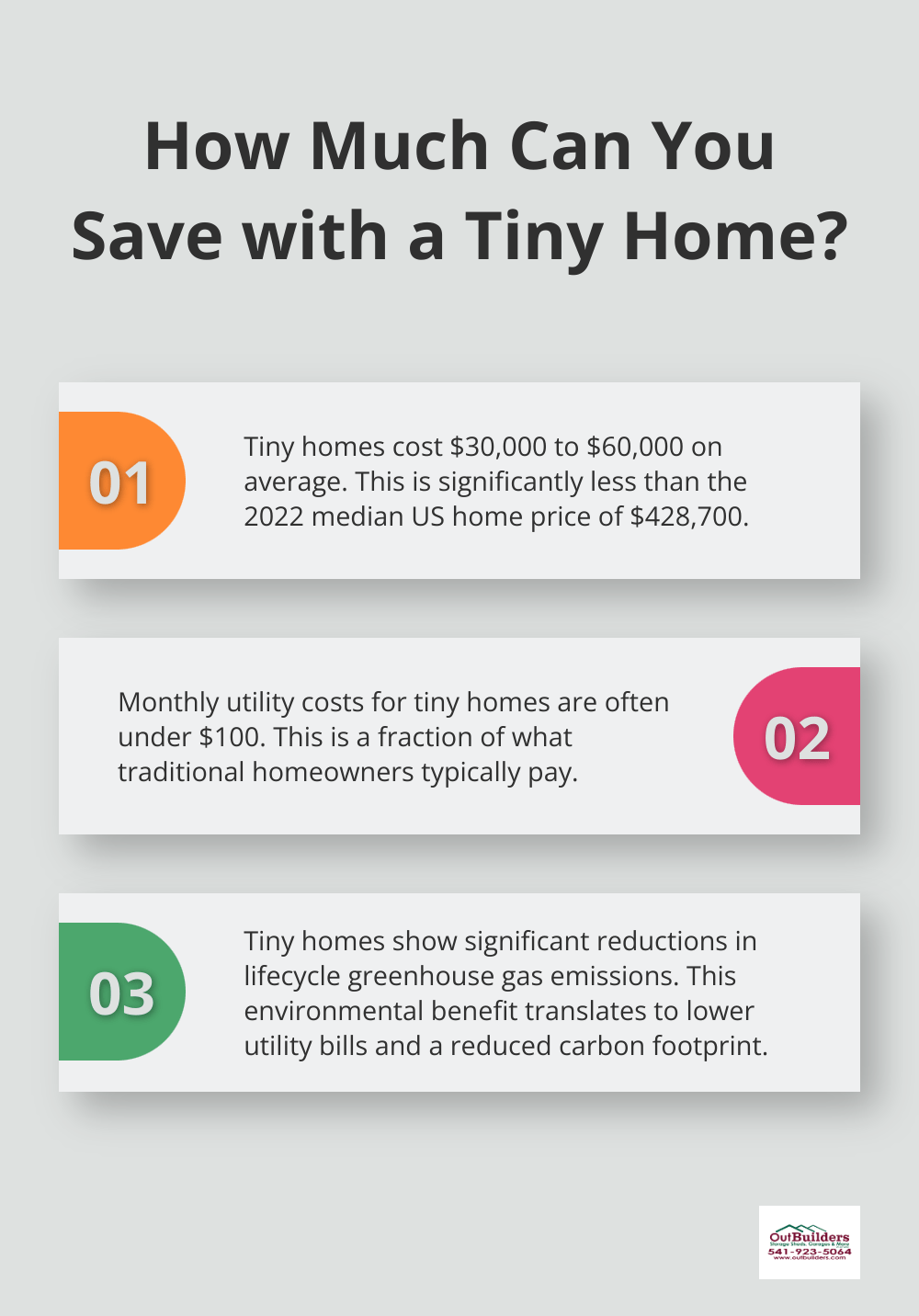
Tiny homes offer a unique blend of financial, environmental, and lifestyle benefits that are hard to ignore. While they’re not for everyone, those who embrace tiny living often find it to be a transformative experience that aligns closely with their values and aspirations. As we explore the advantages of tiny homes, it’s important to also consider the challenges that come with this lifestyle choice.
Tiny Home Challenges: What to Consider
Living in a tiny home presents unique obstacles. While the benefits are attractive, potential tiny homeowners must navigate significant challenges. Let’s explore the hurdles you might face.
Space Constraints: Beyond Downsizing
The most obvious challenge is the limited space. The average size of tiny homes is 225 square feet, compared to the average American home of 2,600 square feet. This drastic reduction forces tough decisions about what to keep and what to discard.
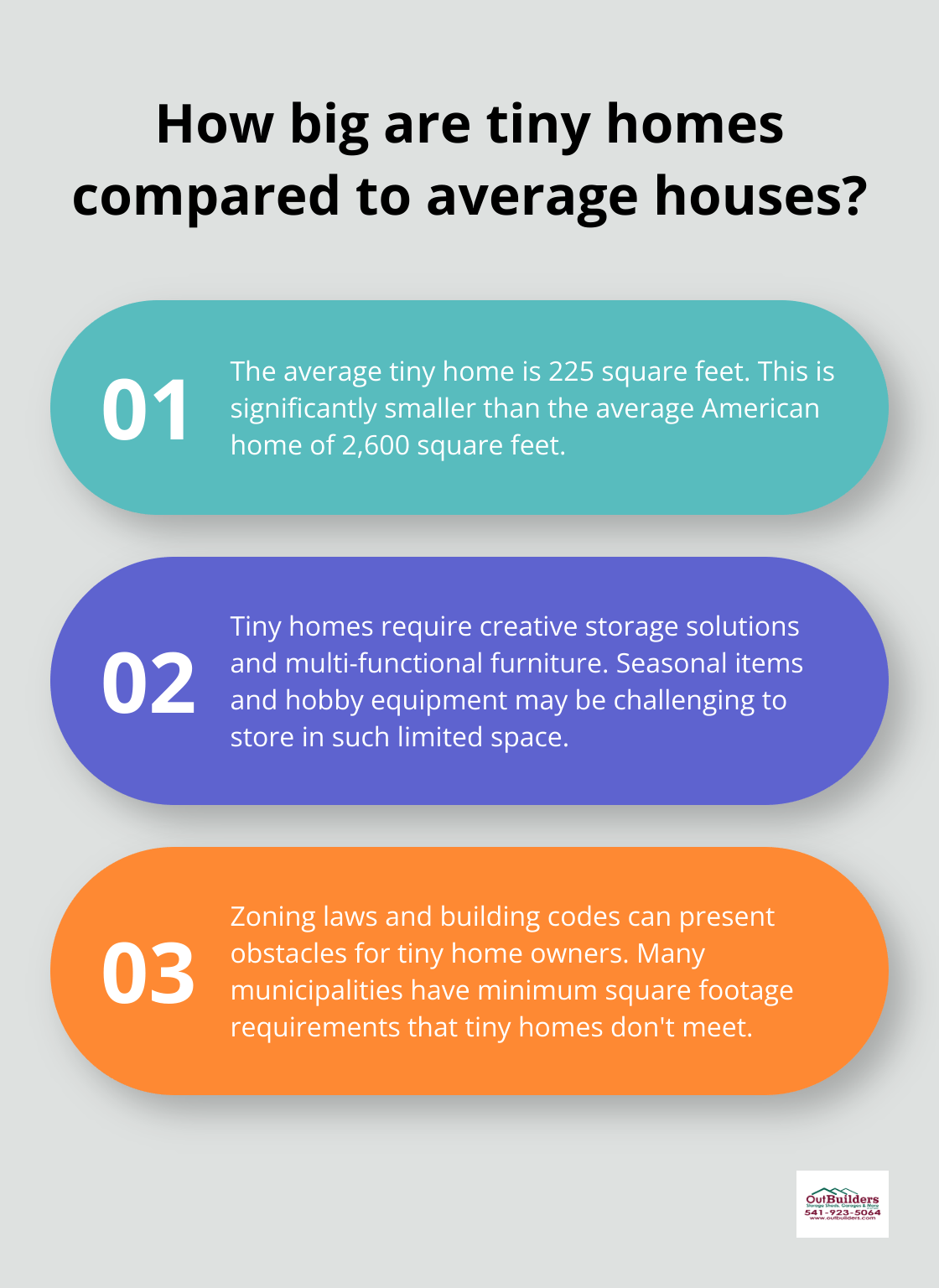
Storage becomes a critical issue. You’ll need creative solutions with multi-functional furniture and clever storage ideas. Pull-out beds, hidden compartments, and vertical storage are essential. However, even with ingenious solutions, you may struggle to store seasonal items or hobby equipment.
Legal Hurdles: A Complex Landscape
Zoning laws and building codes can block tiny home enthusiasts. Many municipalities have minimum square footage requirements for permanent dwellings, which tiny homes often don’t meet. Some areas classify tiny homes on wheels as RVs, limiting long-term parking options.
Research local regulations thoroughly before committing to a tiny home. You may need to advocate for changes in local zoning laws or seek tiny home-friendly communities. Some cities (though progress varies widely) are becoming more open to tiny homes as a solution to housing shortages.
Resale Realities: A Specialized Market
Selling a tiny home can present challenges. The market remains relatively niche, which limits your pool of potential buyers. Traditional real estate agents might lack experience with tiny home sales, and financing can prove tricky for buyers (many lenders don’t offer traditional mortgages for tiny homes).
The value of tiny homes can be unpredictable. While some appreciate in value, others depreciate like RVs. This uncertainty makes it difficult to view a tiny home as a long-term investment comparable to traditional real estate.
Lifestyle Adjustment: More Than Space
Transitioning to a tiny home requires a significant mental shift. You must adapt to a minimalist lifestyle, which challenges those accustomed to more space and possessions. This adjustment isn’t just about decluttering; it’s about changing habits and potentially your entire way of life.
Simple tasks like cooking or entertaining guests become more complex in a tiny space. You might spend more time outdoors or in public spaces to combat feelings of claustrophobia. While many find this lifestyle change liberating, others struggle with the constant need to keep their space organized and clutter-free.
As you weigh these challenges against the benefits of tiny living, consider how they align with your goals and values. The next section will explore practical considerations to help you navigate these potential obstacles and make an informed decision about tiny home living.
Making Tiny Home Living Work
Choose the Perfect Location
Selecting an ideal location for your tiny home requires thorough research of local zoning laws. These regulations vary widely between jurisdictions. Some areas impose minimum square footage requirements that exclude tiny homes, while others might classify them as RVs, which limits long-term parking options. Look for tiny home-friendly communities or rural areas with more flexible regulations. For example, Georgia’s Blue Ridge mountains offer some of the most picturesque landscapes for tiny home living.
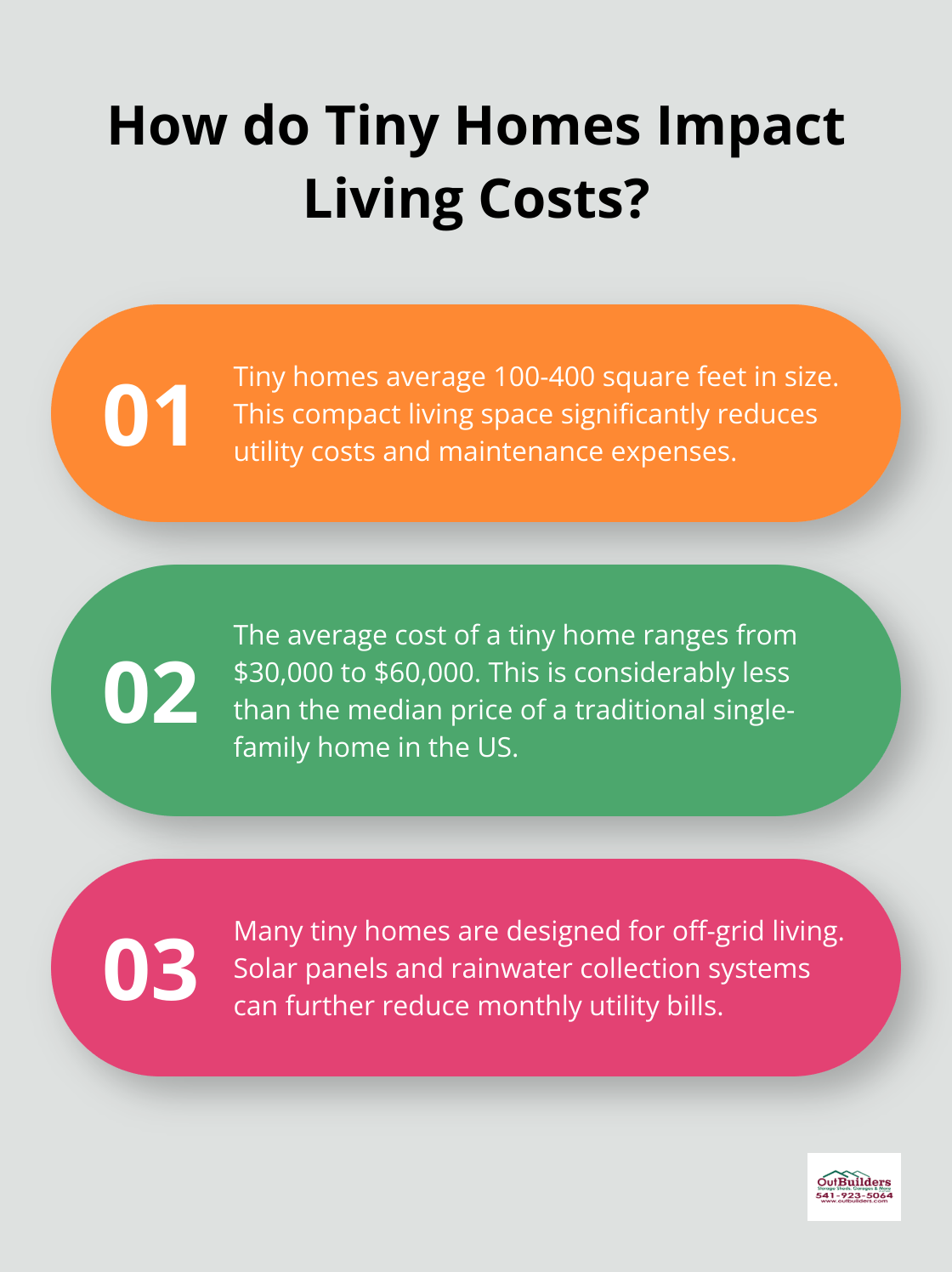
Consider factors like proximity to amenities, job opportunities, and your social network. Some tiny home dwellers prefer to stay close to urban centers, while others seek more remote locations for a closer connection to nature. Climate plays a significant role, as extreme weather can challenge tiny homes, especially those on wheels.
Design for Efficiency and Comfort
Efficient design is essential for comfortable tiny living. Every inch of space must serve a purpose (often multiple purposes). Multi-functional furniture is a must – this includes wall beds, transforming tables, compact seating, and innovative storage solutions.
Vertical space becomes your ally in a tiny home. Use tall shelving units, hanging organizers, and loft areas to maximize storage without sacrificing floor space. Consider built-in furniture and appliances to create a more streamlined look and feel.
Natural light can make a tiny space feel much larger. Add plenty of windows, skylights, or even glass doors to bring in light and create a sense of openness. Light colors for walls and furnishings can also help create the illusion of more space.
Navigate Financing and Insurance
Financing a tiny home can prove challenging, as many traditional lenders don’t offer mortgages for these unconventional dwellings. Some options to consider include:
- RV loans (for tiny homes on wheels)
- Personal loans
- Home equity loans (if you own another property)
- Tiny home-specific lenders (a growing niche market)
Insurance can also present difficulties. Some companies offer policies specifically for tiny homes, while others may insure them as RVs or mobile homes. Shop around and clearly communicate your needs to find the best coverage.
Implement Off-Grid Solutions
Many tiny home enthusiasts want off-grid living. This requires careful planning for utilities and resource management. Solar panels are a popular choice for electricity, with many tiny homes able to meet their energy needs with a relatively small system. For water, try rainwater collection systems or composting toilets to reduce your dependence on traditional plumbing.
Heating and cooling can significantly challenge a tiny space. Look into efficient mini-split systems or radiant floor heating. Proper insulation is vital – high-quality insulation options can make a big difference in energy efficiency.
Final Thoughts
Tiny home living offers a unique blend of benefits and drawbacks. The reduced environmental impact, lower cost of living, and increased mobility attract many to this lifestyle. However, limited space, zoning restrictions, and potential resale difficulties cannot be overlooked.
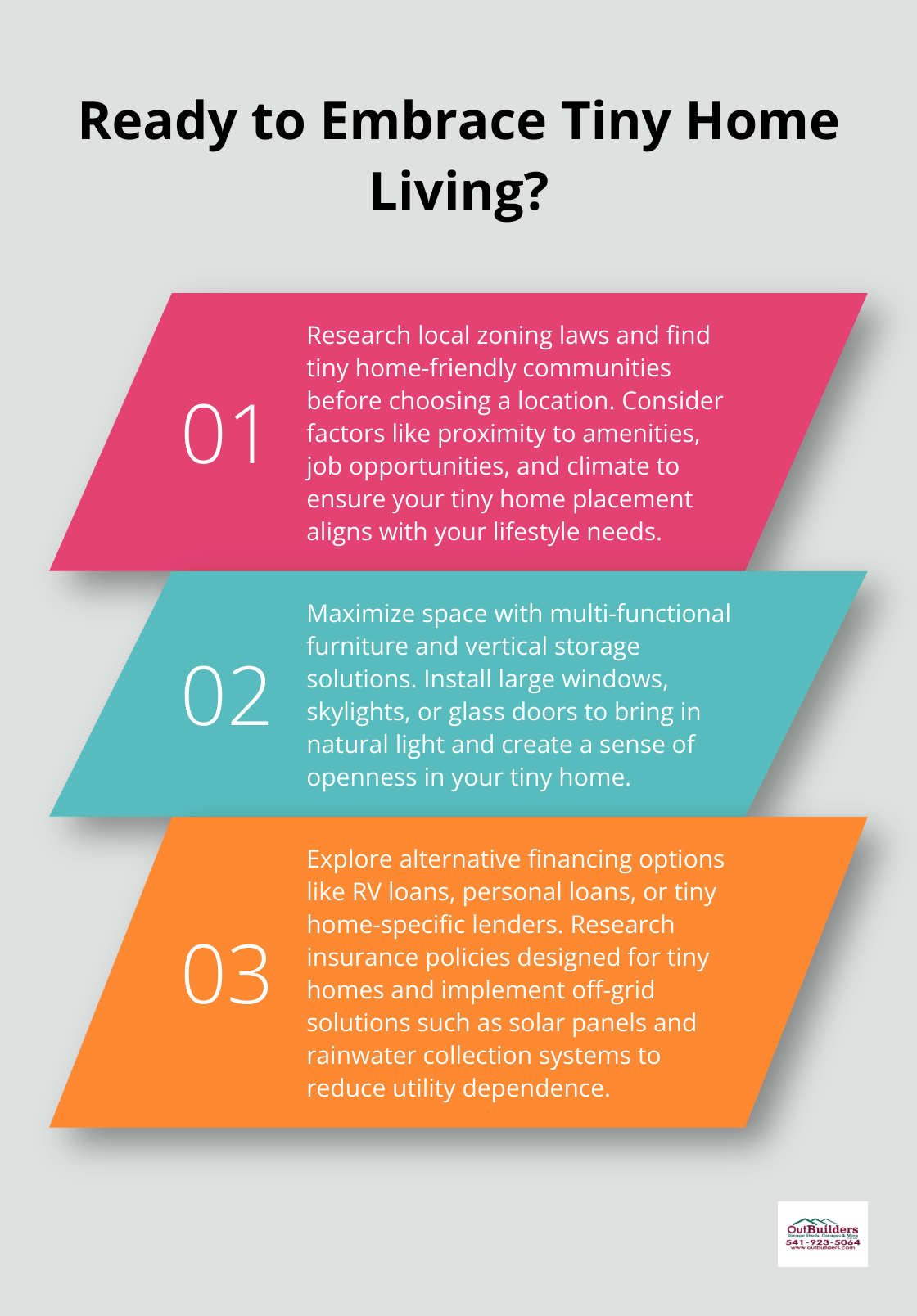
Tiny homes suit individuals or couples who value minimalism, financial freedom, and environmental consciousness. This lifestyle appeals to those seeking flexibility for travel, career changes, or simply living with less. Young professionals, retirees, and eco-conscious individuals often find tiny homes align well with their goals.
If you’re considering a tiny home but aren’t ready to commit, exploring alternative storage solutions can be a great first step. At Outbuilders, we offer high-quality, customized storage solutions that can help you transition to a more minimalist lifestyle. Our products (including storage sheds and cabins) can provide additional space as you downsize or serve as a stepping stone to tiny living.

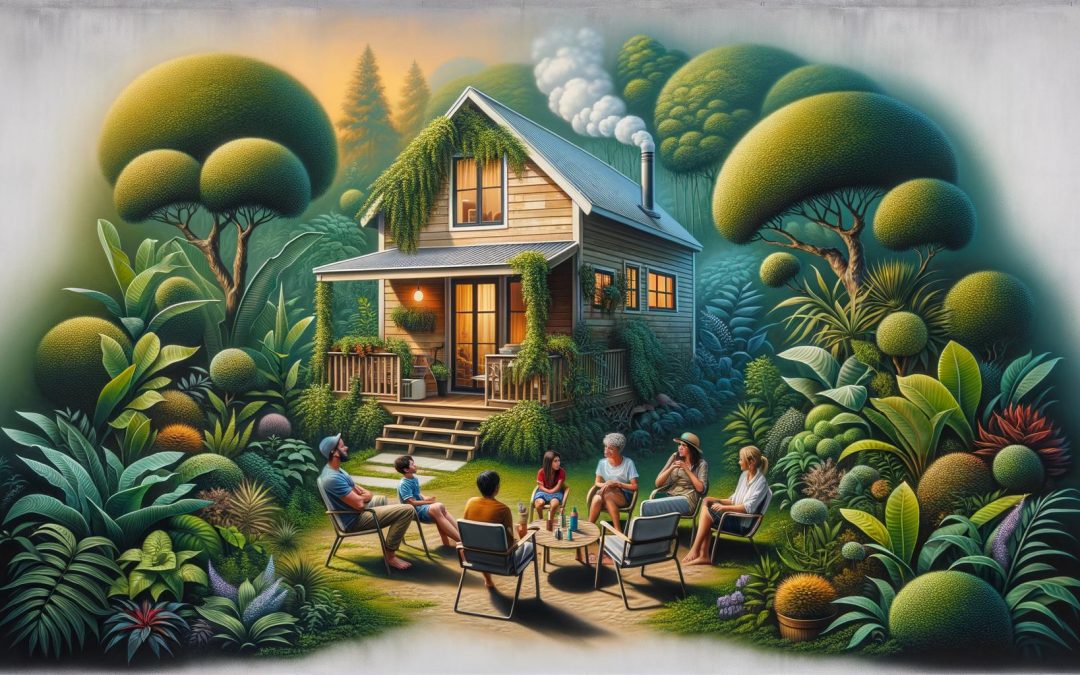





Recent Comments